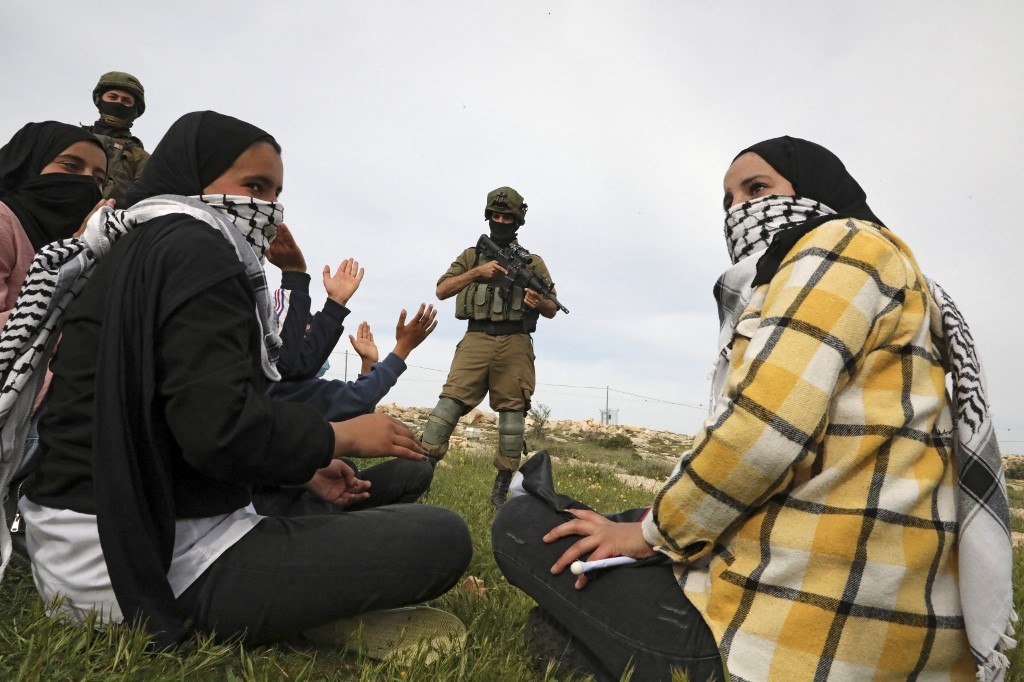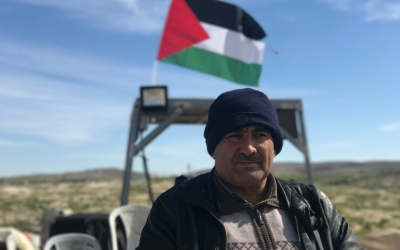Palestinians lambast Netanyahu's visit to archaeological site near settler outpost

Palestine’s foreign affairs ministry on Monday condemned Israeli Prime Minister Benjamin Netanyahu's visit to the ancient site of Khirbet Susiya, south of the occupied West Bank, to boost his election campaign among settlers.
Netanyahu's visit to Susiya was to inaugurate an archaeological site that belongs to an Israeli Jewish settlement in the area.
According to the Wafa news agency, the Israeli army had closed the area to prevent foreign and Palestinian activists from reaching the ancient site and used tear gas and stun grenades to disperse them, but no casualties were reported.
The Palestinian Authority’s foreign affairs ministry said in a statement that Netanyahu's visit is part of "manufacturing religious places" to control Palestinian land and that it will open “the appetite of extremist settlers to commit more violations, attacks and crimes against Palestinian citizens”.
The statement added that settlers will be emboldened by the visit and allow them to feel they have “cover, protection and legitimacy for their expansionist colonial projects”.
Khirbet Susiya is located near the Palestinian area of Masafer Yatta. The site has Mamluk heritage and a mosque.
In 1983, settlers had started to build their outpost in Susiya. In 1986, the Israeli army expelled 400 Palestinians living in Susiya to a nearby Palestinian village, as Israel had designated the area an archaeological site following the discovery of ruins of an ancient Jewish synagogue.
Responsibility for the site was turned over to the Jewish settlers from the nearby illegal "Susiya" settlement, which was built on the village’s lands in 1983. All settlements in the West Bank are deemed illegal under international law.
In 2001, the Israeli army, with the help of settlers, destroyed the entire village after Palestinians (that were not from Susiya) killed an Israeli settler from the neighbouring settlement.
By the time the residents rebuilt their village on the area they live on today - situated between the settlement of Susiya and the archaeological site - Israel had designated the land as Area C, leading Israel to deem it an "illegal encampment".
Area C is the more than 60 percent of the West Bank under full Israeli security and civilian control, as part of the 1993 Oslo Accords.
The residents have tried on numerous occasions to get building permits from Israel's civil administration, but like most of those from Palestinians living in Area C, their requests were denied.
Taking control of Palestinian lands
The PA’s foreign ministry said that Netanyahu's inauguration of the Kirbet Susiya site is “a blatant Israeli attempt to Judaise the heart of Palestinian communities".
“[The Israeli] occupation is working to manufacture places it calls 'religious' in areas threatened by settlements as a method of controlling the Palestinian lands,” the ministry said.
Some of the protesters on Sunday evening marched toward Khirebet Susiya carrying Palestinian flags. They called for ending the occupation and chanted slogans against the Israeli ethnic cleansing of the Masafer Yatta area, which has 19 hamlets and their residents depend on animal husbandry as their source of livelihood.
Israel occupied the West Bank and East Jerusalem in the 1967 Middle East war. Settlement expansion has been an official Israeli policy ever since. There are almost 620,000 Israeli settlers in the West Bank living under the protection of the Israeli army.
Middle East Eye delivers independent and unrivalled coverage and analysis of the Middle East, North Africa and beyond. To learn more about republishing this content and the associated fees, please fill out this form. More about MEE can be found here.





